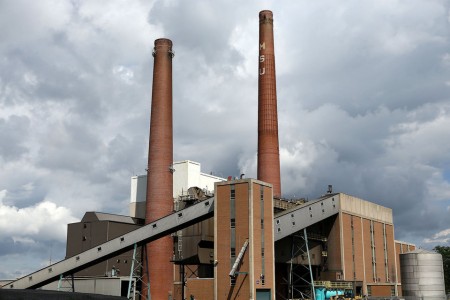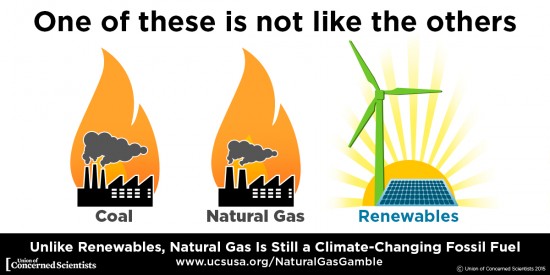August 4, 2015 – Yesterday the President of the United States released the revised Clean Power Plan with a focus on fossil-fuel burning power plants. Why that focus? Because these power plants are the largest carbon dioxide (CO2) emitters in the U.S. contributing 31% of total greenhouse gas (GHG) emissions.
The goal of the Plan which I described on Sunday as Draconian to some, “Big Coal” and shale gas producers, is to drop emissions by 32% from 2005 levels by the year 2030 by emphasizing renewable power and energy conservation.
By doing this the government states the country will derive significant benefits including:
- climate benefits worth $20 billion.
- health benefits between $14 and $34 billion.
- 3,600 fewer premature deaths.
- 1,700 fewer heart attacks.
- 90,000 less asthma attacks.
- and 300,000 fewer missed work and school days.
The Plan creates a partnership between the U.S. Environmental Protection Agency (EPA) and states, territories and aboriginal communities. CO2 emission reduction targets are established for coal, oil and natural-gas fired power plants. The measure the EPA is using as its standard is pounds of CO2 per megawatt hour (lb/MWh). Every partner is asked to implement a plan to ensure operating power plants within each’s jurisdiction achieves CO2 emission reductions commensurate with overall goals.
To achieve the strategy the EPA is using the demonstrated best system of emissions reduction (BSER) as a model for each type of power plant to make improvements that include:
- reducing carbon intensity for each unit of energy produced.
- subsituting lower-emitting natural gas plants where coal-fired plants are used today.
- substituting zero-emissions renewable energy (wind, solar, tidal, geothermal) where coal-fired plants are used today.
The EPA has divided the country into three regions, Eastern, Western and Texas and set achievable rates based on the existing mix of energy sources at present and what can be achieved between now and 2030. Left out of the equation for the moment are Alaska, Hawaii, Guam and Puerto Rico. The reason for the omission of the latter four is insufficient data to create a future standard.
Every state other than Alaska and Hawaii is asked to develop and implement a power plant plan with interim goals between the present and 2030. There are two plan types to choose from:
- an emissions standards plan for every power plant within the state to ensure the performance of each contributes to overall GHG reductions.
- a state measures plan that includes a mix of measures such as residential renewable energy standards and programs, energy conservation initiatives, and source-specific requirements for all affected power plants to meet emission reduction guidelines including penalties for lack of compliance.
States are encouraged to adopt multi-state cooperative approaches including cap-and-trade emissions trading so that they can meet GHG emission reduction targets in the interim period up to 2030. States are also encouraged to create programs to spur private investment in renewable energy and energy efficiency for businesses within their jurisdictions.
The cap-and-trade system as a market-based policy tool is seen by the Plan to be the most effective way to:
- reduce the cost of compliance.
- provide incentives for early reduction.
- instil a competition to meet and exceed emission reduction targets.
- and promote innovation.
The Plan also includes measures to ensure a continuous, reliable supply of energy for the nation throughout the transition to a lower carbon footprint. The compliance periods are long implemented in three multi-year phases for flexibility in planning and investment. The Plan also includes a mechanism whereby a state can revise its plan because of unforeseen challenges arising.
Initial state submissions are required by September 6, 2016. Final plans must be submitted by September 6, 2018. To encourage the states to get on board early the EPA has created a Clean Energy Incentive Program (CEIP) that rewards wind and solar, and energy conservation and efficiency projects that deliver significant carbon reduction results by 2020 and 2021.
Throughout the implementation of the plan the EPA plans for public engagement to encourage continued participation by all partners. This includes avenues of communication to receive local input on strategies to help achieve the total carbon reduction goal.
In today’s Financial Times, Barney Jopson writes that “U.S. shale gas in the unexpected loser” in this announcement, that the “early rush to gas is eliminated” in favor of hydro, wind and solar power and energy conservation. Gina McCarthy, head of the EPA is cited as stating that the shift to renewables in the past year is “happening faster than anybody anticipated.”
Of course the Republican Party leadership in the United States including most of its presidential candidates are opposed to the Clean Power Plan, as are a number of state governors, almost all Republican, with a number of them preparing lawsuits to challenge the EPA’s authority.
To be expected “Big Coal” represented by the American Coalition for Clean Coal Electricity has pushed back describing the plan as “illegal” and stating: “The president’s relentless climate crusade cannot be put ahead of the priorities of hard-working Americans who will pay the ultimate price of staggering electricity bills and lost jobs.”
McCarthy’s response, “some special interest critics will tell you that it can’t be done…but they are wrong.”


















